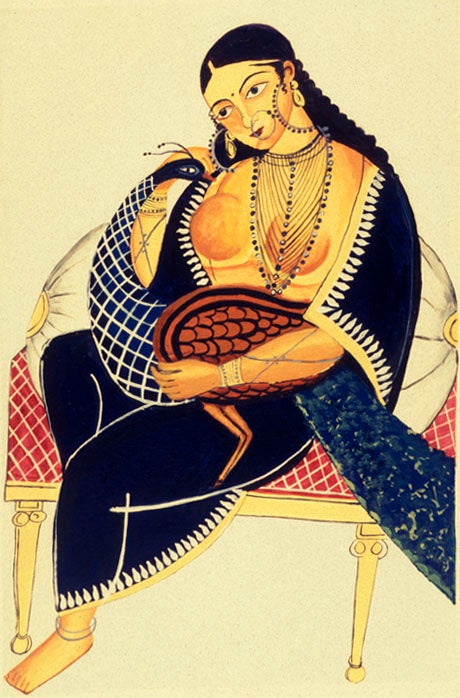Punam Madhok Story
Story of the Block: Punam Madhok
Silk saris with ornate borders are worn by women generally during festive occasions such as marriages in the cooler months of India–November to January or so. The peacock brings warm memories to mind because it reminds me of yearly visits to my grandparents’ house at Jullundur, a town in the state of Punjab, in the north-western part of India. Every summer I would travel from Calcutta (now called Kolkata), a city in the state of West Bengal, in the eastern part of India, by train with my family to spend a month with my grandparents. They lived in an enchanting, palace like house with a wide, open terrace. Summers in Jullundur are hot and dry. During an unexpected shower of rain, two or three peacocks would suddenly appear and dance on the terrace of our house to the delight of us all!
Peacocks are one of the most commonly seen birds in the designs of India. They appear in mehndi (henna) patterns, alpana (floor decorations), as well as in jewelry and textile motifs all over India. Shah Jahan, the Mughal Emperor of the seventeenth century C.E., during whose reign the famous Taj Mahal was built, had an elaborate Peacock Throne studded with precious jewels created for himself. After the collapse of the Mughal dynasty in the eighteenth century C.E., a Persian invader called Nadir Shah supposedly stole the Peacock Throne and nothing more about it is known. But its legend lives on and till today couches in luxurious hotels of India are designed in the shape of a peacock with its fan shaped feathers.

Well known for its beauty and magnificent plumage, a peacock is often represented in Rajasthani and Pahari miniature paintings of the eighteenth and nineteenth centuries C.E. as a companion of the nayika (heroine) who longs to be with her nayaka (hero). The peacock’s habit of strutting and displaying its charming feathers distracted the nayika from her grief in periods of separation. I include here my painting, Woman with a Peacock, that emulates a Kalighat painting of the nineteenth century C.E.
Peacocks are seen mainly during the rainy season in India. When dark, thunderous clouds fill the sky, peacocks dance joyfully. The association of peacocks with rain and thunder has made them symbols of love and passion. Various postures in the folk and classical dances of India are inspired by the graceful movements of peacocks.
The raucous calls of peacocks are known to frighten away poisonous serpents and different parts of these birds help prepare cures for disabilities and diseases such as barrenness and asthma. Many deities of India are connected with peacocks. Krishna, who is one of the most popular gods of India, wears a crown adorned with a peacock feather. Hence peacocks are regarded as auspicious in India. Vases with peacock feathers are placed in houses to bring good luck and ward off evil spirits. Because the peacock influences many aspects of life and culture in India, it is now recognized as the national bird of this country.
